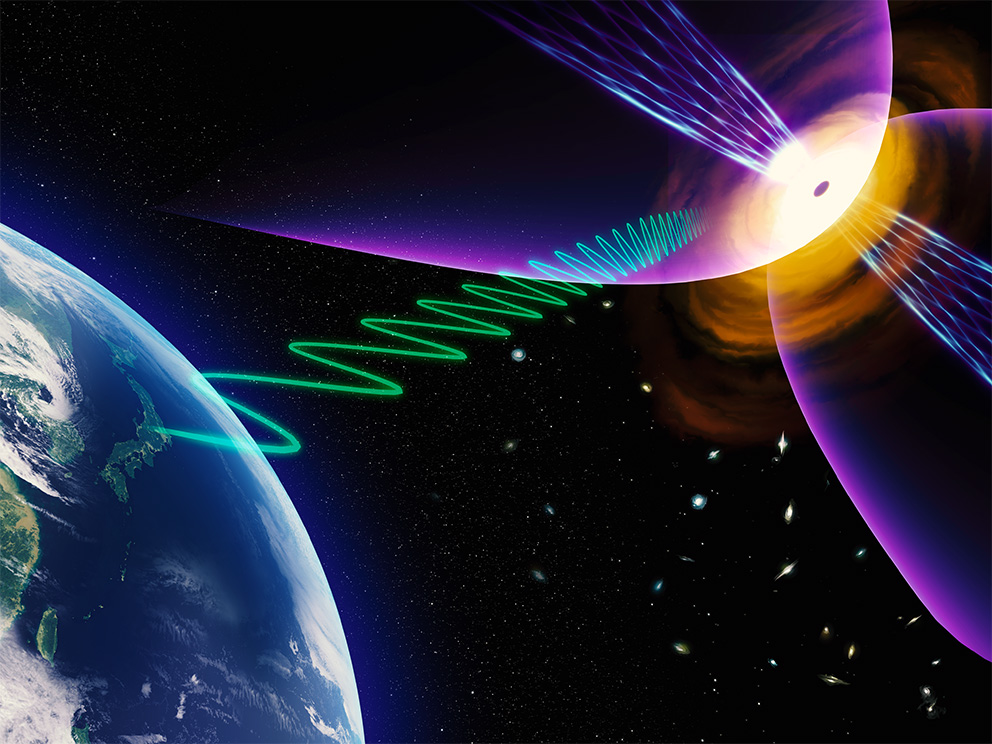
An international team of astronomers used the state-of-the-art capability of VERA, a Japanese network of radio telescopes operated by NAOJ, to uncover valuable clues about how rapidly growing "young" supermassive black holes form, grow, and possibly evolve into more powerful quasars.
It is now widely accepted that nearly every active galaxy harbors a supermassive black hole at its core, with masses ranging from millions to billions of times that of the Sun. The growth history by which these black holes have gained such huge masses, however, remains an open question.
Led by Mieko Takamura, a graduate student at the University of Tokyo, an international team focused on a distinct category of active galaxies known as Narrow-line Seyfert 1 (NLS1) galaxies. These galaxies are suspected to contain relatively small yet rapidly growing massive black holes, thus offering a potential opportunity to study an early evolutionary stage of these cosmic monsters. To gain a deeper understanding of the immediate surroundings of these peculiar black holes, the team observed the cores of six nearby active NLS1 galaxies using VERA - a radio telescope network with an eyesight over 100,000 times more powerful than the human eye. In particular, the team leveraged the newly enhanced ultra-wideband recording capability of VERA, enabling them to detect faint "polarized" radio waves emanating from the core of these galaxies with unprecedented precision.
A portion of radio waves emitted near supermassive black holes is known to exhibit polarization. As this polarized emission propagates through the magnetized gas surrounding the black hole, the plane of polarization gradually rotates, causing an effect known as Faraday rotation. The extent of this rotation (at a given wavelength) is proportional to the gas density and the strength of the magnetic field within the propagating medium. Therefore, polarization and Faraday rotation provide valuable insights into the immediate environment surrounding a central black hole.
Together with the sharpest-ever view towards the cores of these galaxies, the new data have unveiled significantly greater Faraday rotation compared to measurements obtained towards older, more-massive, well-developed black holes. This indicates the presence of abundant gas in the nuclear regions of these galaxies, facilitating the rapid growth of the central black holes. "Supermassive black holes undergo a growth process similar to that of humans," says Takamura. "The black holes we observed have characteristics comparable to a food enthusiast, akin to young boys and girls who have a strong craving for rice."
These results appeared as Takamura et al. "Probing the heart of active narrow-line Seyfert 1 galaxies with VERA wideband polarimetry" in the Astrophysical Journal.






